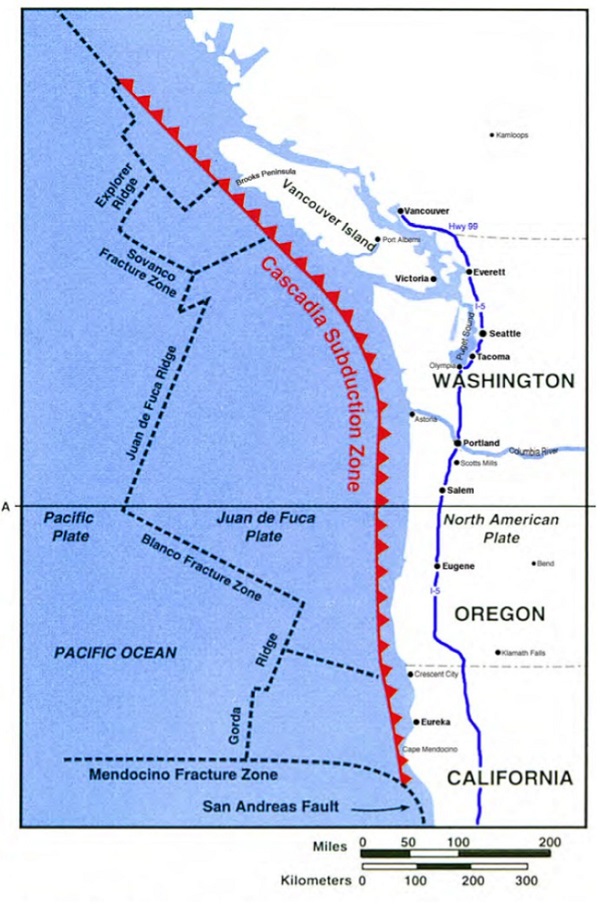About a week or so ago this article titled “The Really Big One” by Kathryn Schulz from The New Yorker made the rounds on Facebook and it got me to really consider what a Cascadia earthquake meant for me (I live in the Pacific NW) as well as for the many millions of others who call this beautiful area home.
If you haven’t read the article you should take the time to do so as it does a good job of painting a vivid picture of the devastation that such an earthquake could have to our area.
But if you’re unaware I’ll quickly explain the scenario…
Earthquakes are caused when earth’s large tectonic plates get stuck trying to pass by or under/over each other; eventually they “break free” and that’s when all of the rumblings and other bad things happen.
If you live in California then you’re no stranger to the small ones and I’m sure you’ve heard that the San Andreas is going to break off California from the rest of the states–or at least cause a ton of damage–for at least the past few decades. Heck, they even made a movie about it… go figure.
Fortunately, that’s yet to happen and I’m that sure so many folks are nearly oblivious to the term “San Andreas earthquake.” I remember as a kid growing up in California I don’t think we even got out of bed for anything under a 4.0. 😉
The Cascadia fault line lies just off the coast of the Pacific Northwest as shown here (in the red):

As you can see, it pretty much runs from northern California to Vancouver Island… many hundreds of miles.
You might think “that’s not so bad” because it’s off the coast but it’s plenty close enough to cause horrible damage to the major cities of Seattle and Portland, to name two of the biggest.
The Cascadia event would, some suggest, be somewhere on the order of between 8.7 and 9.2 magnitude. That’s on par with the earthquake that devastated Japan and caused their never-ending Fukushima troubles.
You can read the article I mentioned at the start (and cite below) but suffice it to say that the Pacific NW is not nearly as *ready* for a major earthquake like Japan.
Regrettably, we’re about due, on average, for the REALLY “big one” to hit the Pacific NW and it’s likely going to be far worse–both in lives lost and property damage–than any other natural disaster to hit America since its inception as a nation.
As bad as the earthquake would be scientists feel that the resulting tsunami could be even worse:
“The water will surge upward into a huge hill, then promptly collapse. One side will rush west, toward Japan. The other side will rush east, in a seven-hundred-mile liquid wall that will reach the Northwest coast, on average, fifteen minutes after the earthquake begins. By the time the shaking has ceased and the tsunami has receded, the region will be unrecognizable. Kenneth Murphy, who directs FEMA’s Region X, the division responsible for Oregon, Washington, Idaho, and Alaska, says, ‘Our operating assumption is that everything west of Interstate 5 will be toast.’”
Well, that’s not comforting, especially since I live west of I-5. And these are odds I wouldn’t want to take:
“…we now know that the odds of the big Cascadia earthquake happening in the next fifty years are roughly one in three. The odds of the very big one are roughly one in ten.”
As far as disasters go that’s pretty much like saying: “It’s going to happen and soon.”
My point ultimately is that if you live anywhere in the Pacific NW and have been ignoring this very likely threat to you and your family, please don’t do so any longer.
Yes, there are always reasons to NOT prepare yourself but this is a very good reason TO prepare yourself. At the very least be able and ready to be without systems of support for a few weeks… a month or two would be better.
It’s not that terribly hard… water, food, lighting… you can do these things. But if you need guidance including the plans necessary to enact a bug out a much more, check out my course below…
Leave a Reply